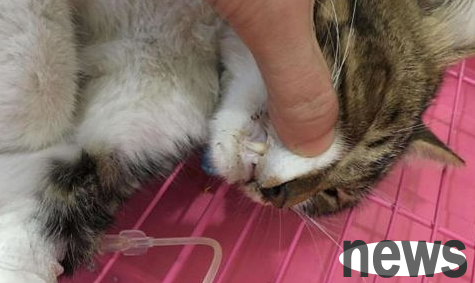How to induce vomiting and first aid after dogs swallow poisons?
Imagine that when you go home, you find that your dog is not very good. After looking around, you find that the dog may have swallowed something very dangerous. Although it is not a good thing to make your dog vomit, it is a common method of first aid for poisoning. Below we will briefly introduce some simple methods for dogs to induce vomiting.
Method 1: Receive hydrogen peroxide
1 to determine whether the dog needs vomiting. Before inducing vomiting, you must confirm whether this is necessary. If your dog swallows any of the following things, you should do vomiting at home:
How to induce vomiting after dogs swallow poisons First aid
* Dogs swallow antifreeze in the past 2 hours;
* Chocolate;
* Grapes or raisins;
* Paracetamol or aspirin;
* Plants, such as azalea or daffodils.
2 Find a suitable place. If the dog is lying in a nest or on a carpet, it is best to move it a place before inducing vomiting, such as outdoors or other places where vomit is easy to clean. A room with floor tiles is good.
* If the dog is weak, it may not be able to walk on its own. You need to hold it or at least assist it to go to the right place.
3 Feed a small amount of food before vomiting. Giving your dog food before vomiting may sound weird, but it actually helps to make it vomit. A little can or a slice of white bread is a good choice.
* Canned food is easier to eat than dry food and tastes better;
* Dogs may not eat actively, so they should stuff the food directly to the dog's mouth and try to let it eat;
* Don't spend too much time for the dog to eat.
4 Contact the veterinarian. This is important! Try not to induce vomiting to your dog before contacting the veterinarian. When making a call, you should provide as much information as possible so that they can tell you what to do next (and what shouldn't be done). Important information includes:
* What do you doubt your dog eat (toxic plants, house cleaning supplies, chocolate);
* How long do you think your dog has eaten these things;
* Symptoms displayed by the dog;
* The size of the dog.

5 Determine how much 3% hydrogen peroxide the dog needs. If the veterinarian says it can induce vomiting, then give the dog 3% hydrogen peroxide, which is a relatively easy-to-use dog emetic agent. The dosage is to take one teaspoon per 4.5 kg of body weight.
* You can use a measuring spoon to correctly calculate the amount of hydrogen peroxide.
6 Fill hydrogen peroxide. Put hydrogen peroxide in an ear potion bottle or eye drop bottle. Try to squeeze out the hydrogen peroxide in the back of the dog's tongue, and let the dog swallow it.
* Do not mix hydrogen peroxide with dog food or drinking water.
7 Let the dog walk around. Moving around can allow the contents of the stomach to mix with hydrogen peroxide to stimulate the vomiting reaction. The dog should be walked for a while after being fed. If the dog is unable to move, shake or move its belly gently.
8 Wait for the dog to vomit. Dogs usually vomit after a few minutes of taking hydrogen peroxide. If there is no sign of vomiting after 10 minutes, take hydrogen peroxide again.
* Some data say that hydrogen peroxide should not be used more than twice. Some say that it is OK at most three times. Please consult your veterinarian for the third dose.
Method 2: Take your dog to the animal hospital for treatment in time
1 and seek medical treatment in time. Even if you have successfully induced vomiting, the dog still needs to be treated by a veterinarian. Inducing vomiting is only a first aid measure and cannot excrete all toxic substances from the dog's stomach and intestines. If the dog is not vomiting, the veterinary treatment is even more critical—which means the dog needs stronger stimulation than hydrogen peroxide to induce vomiting.
* If the dog vomits, you can take a picture of the vomit to the veterinarian.
2 Tell the veterinarian what happened. Even if you may have contacted the veterinarian in advance, it is still necessary to repeat the relevant situation during the veterinary examination, including how much hydrogen peroxide is used, and how many times have you drunk it in total.
* If the dog vomits, describe the appearance of the vomit, or directly show the photo to the veterinarian.
3 Let the veterinarian carry out treatment. Veterinarians can provide vomiting drugs and drugs that prevent poisons from being absorbed. For example, activated carbon, these things will combine with toxic substances in the digestive system, making the poison unable to be absorbed.
* Apomorphine is an opioid that can be used to induce vomiting. Generally, it takes effect in 5 to 10 minutes;
* A drug called xylazine can also be used to induce vomiting in dogs;
* The veterinarian will choose what is the best treatment method based on what the dog swallows.

Method 3 Other methods for inducing vomiting
1 Some things cannot induce vomiting after swallowing. If some substances are vomited after eating, it will cause a lot of damage. If you know that dogs eat foods are the same as those of these, please do not induce vomiting:
* Bleach
* Water pipe cleaning
* Materials containing oil, such as gasoline
2 Observe the signs of severe poisoning. If the dog is in serious condition or has lost its reaction to the outside world, inducing vomiting is a very dangerous thing. If the dog shows signs of serious poisoning, do not induce vomiting, and should take the dog to see a doctor immediately. The following are signs of severe poisoning:
* Difficulty in breathing
* Depression
* Convulsion
* Slow heart rate
* Loss of consciousness
3 Do not use drugs or salts to induce vomiting. Spit syrup was once recommended for canine vomiting, but this medicine will stay in the stomach for a long time. If the dog cannot spit it out, it will cause great irritation to the stomach. Now no longer recommends using salt, because it will be toxic if it is too much.
4 To induce vomiting quickly: If possible, let the dog vomit within about 2 hours after it eats the toxic substance. After 2 hours, these toxic substances move into the small intestine, so that vomiting is useless.
Note: Sharp objects can cause harm to the stomach or esophagus. If you know that a dog has swallowed sharp objects, please do not induce vomiting.













